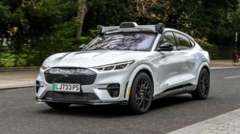Uber is moving forward with its plans to trial driverless taxis in London, in collaboration with the artificial intelligence firm Wayve. These autonomous vehicles will operate without a human safety driver, a feat facilitated by recent changes in UK legislation, which now aims to expedite the introduction of autonomous commercial services.
Initially scheduled for a 2026 rollout, regulations have since evolved, enabling a faster framework for deployment. The details about the availability of these driverless taxis for customers remain uncertain, but Uber has indicated a desire to incorporate them as an option in the UK app once permitted by law.
The UK government envisions the potential for the driverless car industry to generate 38,000 jobs and contribute approximately £42 billion to the economy by 2035. However, concerns regarding the broader social implications of automated vehicle technology have been raised. GMB national secretary Andy Prendergast underscored the potential ramifications on job security and the need for careful consideration of these changes.
Uber has already launched a robotaxi service in Austin, Texas, where customers can use the service if available, with no pricing difference. Competitors, such as Tesla, are also planning similar services in the US. While fully driverless vehicles have successfully traversed public roads in places like China, UAE, and Singapore, ongoing research seeks to determine whether they are safer than human-operated vehicles.
Although some studies suggest automated systems could have fewer accidents, incidents involving robotaxis have occurred, leading to various challenges, including malfunctions. One service in San Francisco was ultimately suspended after experiencing recurring issues.
During a recent trial involving Wayve technology in London, an autonomous vehicle adeptly navigated potential hazards without human intervention, showcasing the system's cautious approach on city streets. With the integration of sensors and AI, this journey exemplified the promising capabilities of autonomous vehicle technology, setting the stage for future advancements in urban transportation.





















